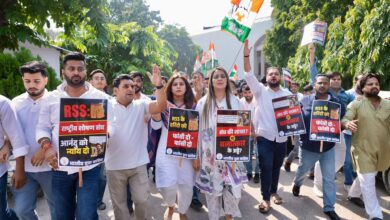
India Implements Comprehensive Guidelines for Accessible Cinema Experiences
Ministry of Information & Broadcasting (MIB) has issued Guidelines of Accessibility Standards in the Public Exhibition of Feature Films in Cinema Theatres for Persons with Hearing and Visual Impairment.
Hon’ble Prime Minister has envisioned that “Today special attention is being given to opportunity and accessibility for Divyangjan. It is our endeavour to ensure that every individual in the country is empowered, an inclusive society is created, spirit of equality and cooperation enhances harmony in the society and everybody progresses together as one.”
Hon’ble Minister for Information and Broadcasting carrying forward the vision Hon’ble PM, has recognised the essentiality of having accessibility standards for cinemas so that Divyangjan can partake in the cinematic journey, opening up the theatrical experience to a segment of the population that was previously excluded.
These accessibility standards, meticulously crafted following in-depth consultations with disability rights groups, cinema exhibitors, research scholars, and movie producers, represent a significant stride forward towards inclusivity. These new guidelines will pave the way for persons with hearing and visual impairments to fully experience the cinema fostering their inclusion in the main stream society.
The objective of these guidelines is to provide an enabling framework to support the development of a culture and practice of accessibility of feature films for persons with hearing and visual impairment by adopting the following measures:
- Defining the general principles for accessibility of feature films;
- Identifying barriers to fully accessible feature films by determining relevant rules, requirements, standards and funding mechanisms to address such barriers;
- Putting in place measures to ensure that persons with hearing and visual impairment have access, on an equal basis with others, to the public exhibition of feature films in cinema halls/movie theatres screened for commercial purposes;
- Defining an institutional framework to ensure transparent oversight and impartial dispute resolution mechanism.
Key features of Accessibility Standards include:
- Ensuring Accessibility of films to Persons with Hearing and Visual Impairment
- Applicable for feature films that are for public exhibition in cinema halls/movie theatres for commercial purposes.
- Accessibility standards have not just been defined for film content, but also on assistive devices and theatre infrastructure, incorporating global best practices to prescribe the accessibility needed by persons with Hearing and Visual Impairment, to enjoy films in cinema theatres.
- Mandatory Accessibility Features: at least one accessibility feature each for the hearing impaired and visually impaired, i.e. AD & CC/OC
- “Audio Description” is the auditory narration of visual representations in a film for enhancing the film watching experience for visually impaired persons. During gaps in dialogue, it describes visual elements such as scenes, settings, actions and costumes.
- “Closed captioning” is the means by which both the audio dialogue and sound representations of a film are made visible on demand by the user via on-screen text that is synchronized with the audio content.
- Additional Accessibility Features:
- “Indian Sign Language” Indian Sign Language interpretation by Interpreters must be provided in a picture-in-picture mode and it must be accurate, synchronized and convey clear message to the hearing impaired.
- Film producer required to deliver the film for certification to CBFC along with files of accessibility features.
- Implementation schedule –
- All feature films that are to be certified in more than one language to comply with the guidelines within 6 months and all others within 2 years
- Starting January 1st, 2025, films submitted for prestigious events like the National Film Awards & International Film Festival will also need to comply to these
- Accessible features may be deployed by cinema theatre by any of the following means:
- Using the following separate equipment in theatres (during the regular show) such as Mirror Captions, Closed Captioning Smart Glasses, Closed Caption Stands, Closed Caption display below the Screen or Headphones/Earphones for Audio Description (AD), etc.
- Using Mobile Apps (during the regular show) –Film producers to integrate the CC/OC & AD for the feature film in any suitable software application to extend the accessibility feature in any usual screening of the film in the theatres, which can be used through the personal device of the user.
- Using other technologies: Use of any other technological inputs as supportive/assistive devices and software applications as available in the market.
- Exhibitor Action Plans: Theatre owners will develop self-regulatory plans for accessibility, following consultations with disability stakeholders and implement accessibility features within 2 years.
- Monitoring Committee: A dedicated committee appointed by the MIB, Government of India, with half its members being persons with hearing/visual disabilities and representatives from the film industry, will oversee implementation of accessibility standards and provide guidance.
- Grievance Redressal: Viewers can also file complaints with theatre licensees if accessible features are unavailable. And the Committee will address their concerns within 30 days through the licencing authority.
This initiative also aligns with the Rights of Persons with Disabilities Act, 2016 (RPwD Act), which mandates government action to promote universal access and inclusion in information and communication, including access to films.
These comprehensive guidelines establish a robust foundation for accessible feature film content and theatre infrastructure, fostering greater inclusion.




